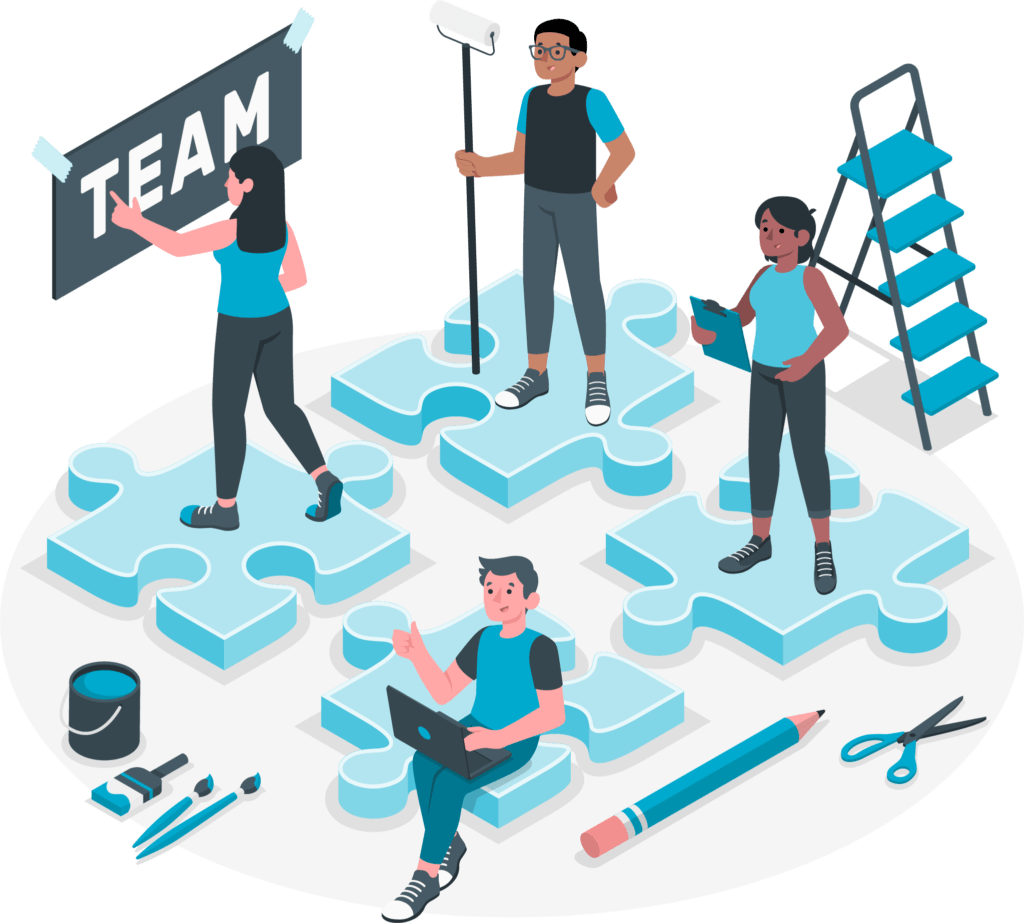Developing a learning culture
Producing, transferring, and sharing knowledge is a key challenge for most companies. To ensure that employees are actively involved in developing their skills, training departments aim to create a learning culture within the organization. This implies to promote discussions and learning for everyone in the daily life of the company. We are going to wonder what is behind the words “learning culture”, how to create a suitable environment to implement it and how to equip the company to support it.

What is a learning culture?
The learning culture needs to be shared by all employees within the company and therefore requires them to become actors in the production, transfer and sharing of knowledge. This notion is indeed closely related to social learning.
Training is no longer top-down, meaning based on the company’s HR policy, and then built by a training department before being spread to the learning population. Training is everywhere in the company and each employee is both the architect and the beneficiary. This learning culture must, however, be conducted by training teams and serve the company’s performance and the competitiveness of employees on the job market.
Creating a favorable environment for the development of a learning culture
The challenge for the company and the training department is to create the right environment to encourage employees to learn, to improve the mastery of their business skills and to acquire new skills to benefit the organization. It is therefore necessary to know how to accommodate individual and collective objectives. The company and the employee are working in the same direction. This means giving employees responsibility for their work, making them aware of the organization’s performance and implementing a skills-based approach : mapping business skills, assess the level of proficiency for each skills and support employees in their skills development by individualizing training courses according to individual objectives.
The learning culture requires an adequate, liberated, open working environment to allow collaborative training. The right to fail is essential. It is by doing that we learn, and it’s even by failing that we learn best. Exchange and informal training are encouraged if there have clearly dedicated spaces and times within the company. And as everyone learns differently, it is important to play on the different motivational levers of employees to encourage them to learn1: Is it the need for proficiency and a sense of competence that drives one? Or keeping competitiveness in the labor market? The pleasure of being empowered and autonomous? The social influence of becoming a recognized expert on a subject? It is particularly important to value the expertise of each person within the learning company and to identify the “experts” in each field to encourage the exchange and transfer of knowledge between employees.
Equipping to develop a learning culture
Companies are gradually equipping themselves to promote and develop a learning culture on a global scale. Artificial intelligence allows to automate many tasks:
- Build learning paths tailored to each learner thanks to Adaptive Learning,
- Identify the experts through a precise diagnosis of their skills,
- Matching employees with similar or complementary skills, allowing everyone to learn from their peers (the 70-20-10 rule, which means that 20% of what we learn is acquired by observing our peers)
- Enhance training catalogue and identify the impact of each learning resource to highlight the most efficient ones and rework those that need to be improved,
- Work on the collective aspect of learning thanks to learner profiling, enabling to suggest resources appreciated by similar profiles (a sort of Netflix of training whose aim would be educational rather than marketing).
Other digital tools will enable feedback to be given between pairs or learning to be reinforced and applied in the daily life of the employee thanks to mobile, microlearning or even immersive learning to put the learner in concrete situations. They will also be used to measure the impact of training on the proficiency of the employees on the performance of the company thanks to relevant analytics.
Beyond the tools, a learning culture involves informal exchanges. Many discussions and knowledge transfer take place in the company without being tracked or measured. Yet, they are a foundation for the learning culture. That is why it is important to create a favorable context for their development.
Sources
1La We Box (21 avril 2019) 9 leviers de motivation et d’engagement au travail : quel est le vôtre ? (https://www.lawebox.com/ressources/leviers-de-motivation)
2 Wikipédia (https://fr.wikipedia.org/wiki/Modèle_70/20/10)
Illustration by Storyset
Latest news
Our latest articles about the topics: learning, science and Domoscio's news.